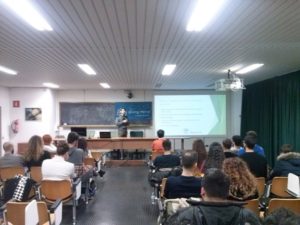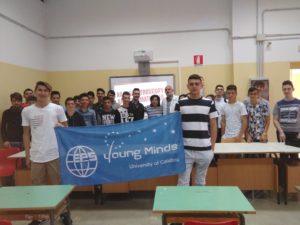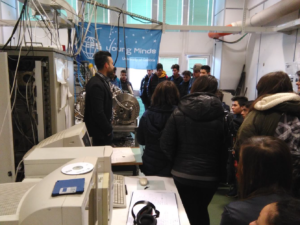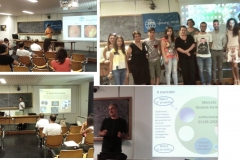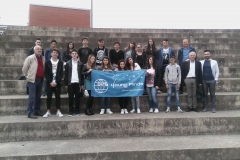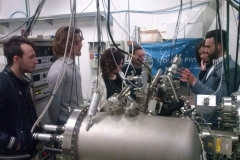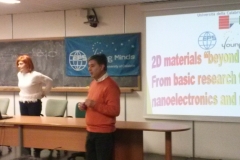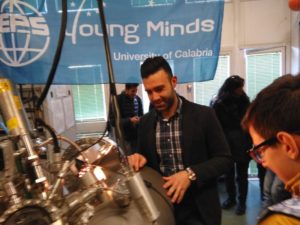 This activity has comprised both visits of students to University of Calabria, Department of Physics and, moreover, visits of members of the YM section to secondary schools.
This activity has comprised both visits of students to University of Calabria, Department of Physics and, moreover, visits of members of the YM section to secondary schools.
Concerning the visits to University of Calabria, students have been involved in simple demonstration of Raman spectroscopy and diffraction experiments with electrons and X-rays. In particular, students have understood how it is possible to recognize the different atomic components in an unknown material. Moreover, they have been introduced into crystallography with simple and funny demonstrations.
The visit to the Department of Physics has been organized thanks to the crucial support of local municipalities, that have kindly shared school buses to transport students to University of Calabria in Arcavacata di Rende (CS).
The visit to University of Calabria has been an occasion to give students the first contact with University and to explain them research at our Department of Physics with simple words.
We have shown them some prototypes of devices fabricated at our Department.
As regards the simple experiments carried out directly at secondary schools, we have tried to simplify as more as possible the concepts in Physics.
As an example, we have provided a direct demonstration of the Archimedes’ principle, with very simple equipment. We have tried to demonstrate that it works on both gaseous and liquid environments, by changing our experimental setup.
We have emphasized the importance of Archimedes’ principle with many examples from our daily lives. We have also stimulated the students to imagine a world where the Archimedes’ principle could not exist.
Moreover, we have built a lemon battery, with the direct participation of students. The goal of making a lemon battery is turning chemical energy into electrical energy, creating enough electricity to power a small LED light or a watch.
Students have experienced and successively realized (with the help of a short and simple explanation) that the source of electric energy in this demonstration is the combination of copper and zinc strips in the citric acid of the lemon.
We have used a multimeter to measure the voltage with one lemon and then again as we added more lemons.
Finally, it is worth mentioning that, throughout the entire duration of the activity, we have discussed with interested students about the various possibilities of carriers in Physics.
We thank the teachers of secondary schools for their kind collaboration.

